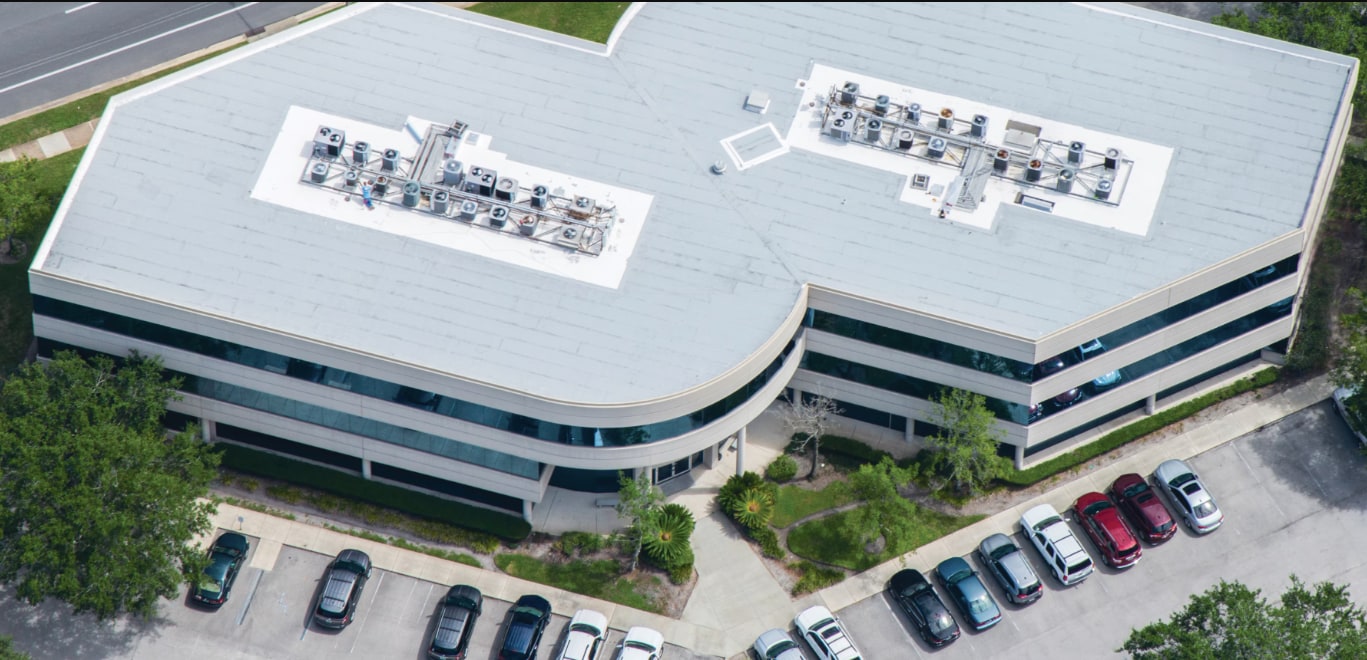Just as the roof provides a protective barrier against the elements for a building interior, sealants are essential for maintaining the integrity of the roof itself.
By sealing the flashing around breaks and gaps caused by pipes and other penetrations, sealants perform a vital function in the execution of the best waterproofing for roof systems. Sealants can also be used to fill holes around solar panel fasteners or adhere layers of roofing materials as well as repairing leaks and chimney damage caused by the environment.
Addressing Detailing Challenges
The best waterproofing for roof systems is the one suited to the particular construction project's needs. While this may seem obvious, in practice, rooftop penetrations, roof-to-wall transitions, and other areas where rooftop waterproofing integrity is most vulnerable can complicate the selection process. This includes choosing between sealants and caulk. Sealants and caulk perform similar functions, and sometimes, the two terms are used interchangeably. However, there are important distinctions between the two.
Sealant is primarily a silicone-based product, while caulk is usually formulated from acrylic or latex. Sealant generally offers greater flexibility than caulk, which tends to be brittle. This flexibility makes sealant an ideal choice in addressing common commercial roof challenges, such as sealing breaks in the roof surface caused by pipes, conduits, and HVAC units. Sealants can also fill gaps created by roof-to-wall transitions, to help prevent water leaks at these intersections, a task for which caulk is less well-suited. Finally, sealant is typically available in a wider variety of colors, which can help simplify edge detailing.
Assessing Material and System Compatibility
The materials in a rooftop application play a large role in determining the selection of a sealant. A sealant designed for porous materials, such as concrete or wood, will perform poorly on nonporous materials, like vinyl or aluminum, which can lead to adhesion failure or inadequate sealing performance. Similarly, painted or stained surfaces and well-worn or damaged rooftops can introduce additional complexities. Aging or weathered substrates may have compromised surfaces that can reduce adhesion capability, requiring a primer or sealant specifically designed to bond with irregular or deteriorated materials.
Environmental and site conditions, during application, can also influence sealant selection. Areas exposed to moisture, whether from dew, rain, or ongoing construction, require a sealant that can adhere effectively to damp surfaces. Some sealants are formulated to cure in the presence of moisture, while others require completely dry conditions to achieve proper bonding. Failure to account for these factors can lead to premature breakdown, reduced longevity, or inadequate waterproofing.
A waterproof roof sealant must also be adaptable to dynamic joint movement. A sealant that lacks sufficient elasticity may crack or fail under stress. To prevent this, the selected sealant should be able to accommodate contraction and expansion without losing adhesion, especially in the face of temperature extremes. Additionally, larger gaps create risks for sealant failure. Reducing this risk requires selecting a sealant with exceptional flexibility and gap-filling capability.
Best Practices for Waterproofing Sealant for Roof Application
All the care in selecting materials will be wasted if shortcuts are made in surface preparation, cleaning, and priming. Saving a few dollars or days in the short term can eventually lead to problems, such as premature adhesion failure, leaks, and costly repairs. A well-applied sealant system depends on a clean, dry, and stable substrate to ensure strong bonding and long-term performance.
Cleaning
All surfaces should be thoroughly inspected and prepared before applying sealant. Debris, grease, old coatings, and other contaminants may interfere with adhesion, so these should be properly removed. Roofs should be allowed to dry fully unless a moisture-tolerant sealant is being used. Excessive moisture can affect curing time and performance even for sealants designed for damp applications, so follow the product instructions carefully.
Priming
Many substrates, particularly porous ones like concrete, require a primer to create an optimal bonding surface. Primers also help seal absorbent materials, reducing the risk of air bubbles or weak adhesion points. Using a manufacturer-recommended primer can help ensure compatibility with the substrate material.
Following Manufacturer's Instructions
In addition to selecting the right sealant, it's essential to apply it according to the manufacturer's specifications, including application thickness, curing times, and environmental considerations that can influence performance. Failing to follow these guidelines can lead to adhesion issues that may not become apparent until after the sealant is exposed to weather and movement stress. Proper application can help extend the sealant's lifespan and contribute to the performance of a roof's waterproofing system.
Waterproof Roof Sealants: Benefits of High-Quality Detailing
Siplast PS Elastomeric Sealants can address a variety of waterproofing challenges on roofing systems. PS-209 Elastomeric Sealant is a flexible, moisture-curing, gun-grade sealant, while PS-715 NS Elastomeric Sealant is a moisture-curing, non-slump, gun-grade sealant. Both formulations form secure, durable bonds to asphalt, aluminum, galvanized steel, wood, masonry, fiberglass-reinforced plastic, vinyl, and many types of coated metal. Also, Siplast PS sealants will not damage expanded polystyrene or other solvent-sensitive construction materials.
For the highest level of waterproofing protection for roofing, explore Siplast premium liquid-applied waterproofing systems.

